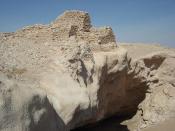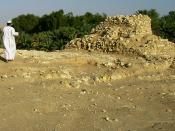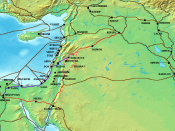Ubar is a site of archaeological importance, located in the Southern Oman the Arabian, Peninsula. The site provides evidence of a small, ancient city with a population of only 100 people. The city is thought to be a small but wealthy trade hub at the centre of ancient trade routes. The city was surrounded by walls and towers.
The site was discovered in 1983 when Nicholas Clapp, an amateur archaeologist spotted evidence of on a NASA satellite photo. Clapp believed the location matched ancient references to Ubar. In 1984, excavation began removing vast quantities of desert sand which had buried the city. Once the city was uncovered many structures were uncovered walls surrounded Ubar with watch towers. Pottery dated to 2000 BC was located along with jewellery and everyday utensils, this suggests that Ubar was destroyed in a single destructive event.
Most evidence suggests that Ubar was a small but wealthy trade hub.
Jewellery and pottery found at the site are highly sophisticated artefacts which suggest a wealthy population lived in Ubar. Significant evidence of Frankensence trade, a very valuable fragrance which was popular in antiquity Pottery dated to 2000 BC provides a very accurate date for the destruction. The exact reason for the destruction is unknown but investigation of the site suggests that the city collapsed into a limestone cavern which was then covered in desert sand.
Ubar is a very important site which should be conserved and protected. The city provides a strong link to the ancient past for the people of the region. Conservation is important so that future generations of archaeologists can study the site and add to our knowledge of the ancient city. Overall, Ubar has provided us with a snapshot of ancient society, it contribution should be protected.


